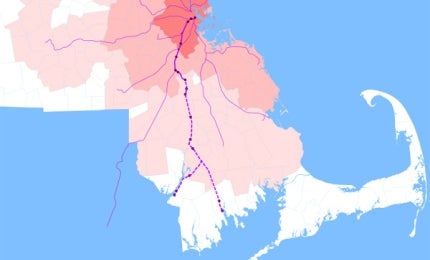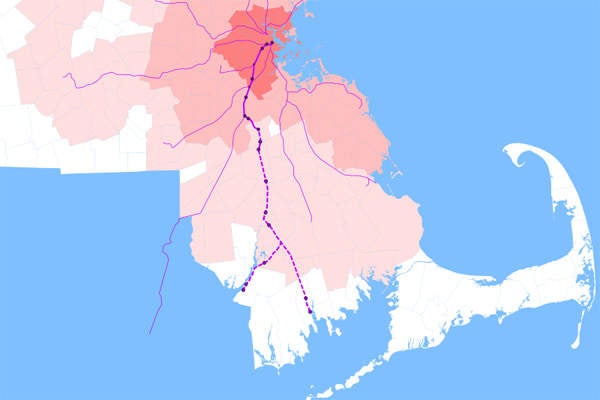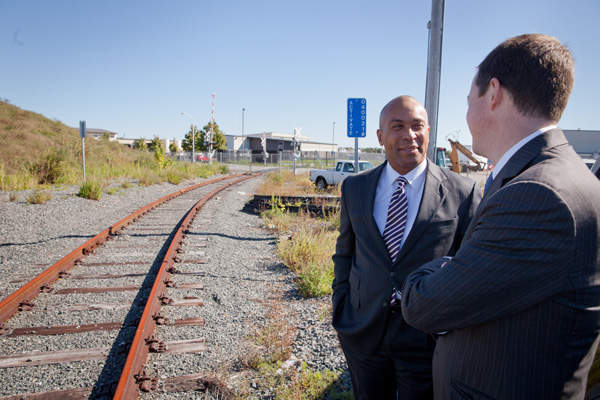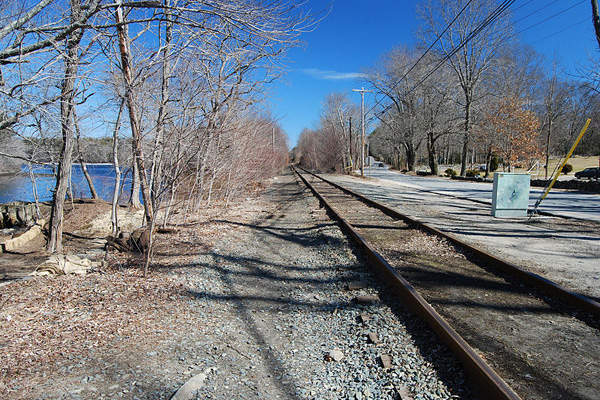
Being developed by the Massachusetts Bay Transportation Authority (MBTA), the South Coast Rail Project will provide passenger rail transportation service from the south station in Boston to the south coast of Massachusetts, US. The project will involve the construction of ten new stations connecting the towns of Taunton, New Bedford and Fall River to Boston.
The $2.3bn project is scheduled for completion in 2021. It will create approximately 3,800 jobs and will return $500m to the economy each year.
The project is currently in the design and approval stage. The final environmental impact statement was issued in September 2013. Construction works to rehabilitate certain sections of existing rail lines along the route, including the replacement of ties and bridges, started in November 2013 to support the planned commuter line.
South Coast Rail project details
The commuter rail project is being undertaken to restore passenger services from New Bedford and Fall River to Boston. It will extend the MBTA’s existing Stoughton commuter line from Stoughton to New Bedford and Fall River on an electrified line.
New stations to be built along the line include North Easton, Raynham Park, Taunton, Taunton Depot, Freetown, Fall River, Easton Village, Kings Highway, Battleship Cove and Whale’s Tooth. The Stoughton and Canton Center stations are being reconstructed.
The project also involves the reconstruction of 44 at-grade crossings and 34 bridges along the route. Two new layover facilities have been proposed in the New Bedford and Fall River branches of the line for the overnight halt of trains.
A traction power system comprised of a main substation at Easton and New Bedford, a switching station at Canton and Berkley and six new paralleling stations at Freetown, Easton, Taunton, New Bedford and Fall River will be developed to support the electric trains on the line.
A new positive train control (PTC) signal system will be deployed for the section of line stretching from Canton Junction to New Bedford and River Falls, and the Boston-Canton Junction segment will use the existing signaling system on the Northeast Corridor (NEC) rail line connecting New York and Boston.
South Coast Rail route
The South Coast commuter line will run on 15.5 miles (25km) of existing NEC track infrastructure from Boston to Canton Junction. The line will then continue 3.8 miles (6.1km) on the active Stoughton line from Canton Junction to Stoughton, which will be reconstructed as a double-track line.
Massachusetts Bay Transportation Authority (MBTA) is currently extending the Fitchburg commuter rail line, a 50-mile corridor from Boston to Leominster, US.
New tracks with a route length of 16.4 miles (26.4km) will be laid from Stoughton Station to Weir Junction in Taunton, where the South Coast rail will use the routes of the New Bedford main line and Fall River secondary line, both operated by CSX Transportation, to connect New Bedford and Fall River.
The 4.9 miles (7.88km) section of the New Bedford Main Line from Weir Junction to Myricks Junction will be reconstructed as a double-track line. The 14.5 mile (23.3km) section from Myricks Junction to New Bedford will be renovated as a single track with three sidings, whereas the 12.3 mile (19.8km) section between Myricks Junction and Fall River will be rebuilt as a single track with four sidings.
The 55-mile route between New Bedford and Boston can be travelled in 77min, while the travel time for the 52.7-mile Fall River-Boston route will be 75min.
Contractors involved
A consortium comprised Vanasse Hangen Brustlin (VHB) and HNTB Corporation was awarded a $210m ten-year programme and construction management contract for the South Coast rail project in June 2014. The contractual scope includes programme management, data collection, partial preliminary design, environmental permitting process and public outreach.




